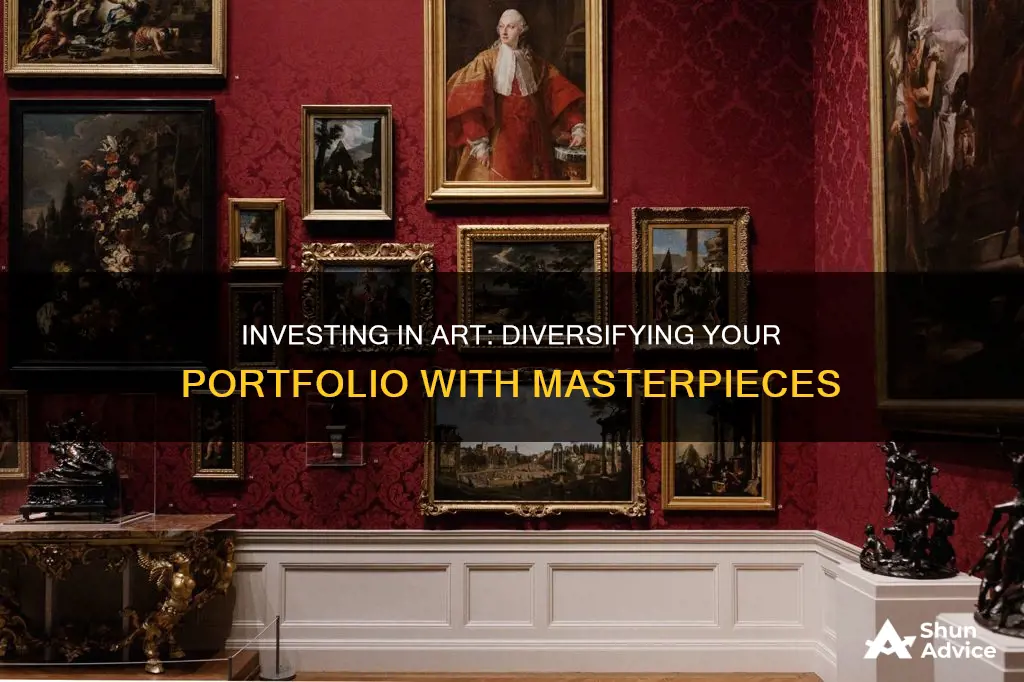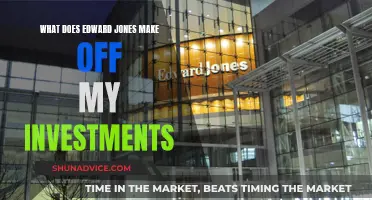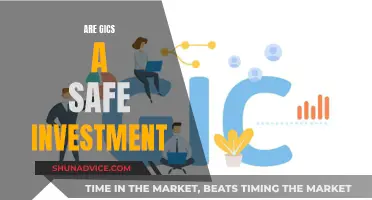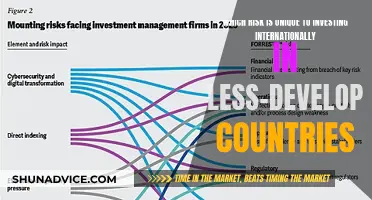
Art has become an increasingly popular asset class for investors, with the value of the market growing. In 2022, the global art market generated nearly $68 billion, surpassing pre-COVID figures. This presents an opportunity for investors to diversify their portfolios and invest in an asset class that is not tied to the performance of the stock market or the economy.
Art can be a lucrative investment, but it requires knowledge and skill to choose pieces that will increase in value over time. It is important to do your research and understand the risks involved before adding art to your investment portfolio. This includes being aware of potential counterfeits and stolen artwork.
There are different ways to invest in art, including physical art ownership, fractional art ownership, and art financing. When investing in art, it is crucial to decide what type of art you want to collect, set a budget, and practice your negotiating skills.
By adding art to your investment portfolio, you can not only enjoy the beauty of owning artwork but also potentially see fantastic returns in the long run.
| Characteristics | Values |
|---|---|
| Art as an asset class | The value of the art market has grown, with paintings dominating the market. |
| Diversification opportunity | Art has a low correlation with other asset classes, making it a good candidate for diversification. |
| The art market is growing | The global art market generated nearly $68 billion U.S. dollars in 2022, surpassing pre-COVID figures. |
| Art can outperform the S&P 500 | Between 1995 and 2022, contemporary art delivered an average annual return of 12.6%, compared to 9% for the S&P 500. |
| Inflation protection | Art can serve as a hedge against inflation and recession, as its value may not be tied to the global economy. |
| Challenges and risks | Art is an illiquid asset that requires time and expertise to sell. It also involves maintenance and preservation costs. |
| Unpredictable appreciation | The appreciation of art is subjective and unpredictable, with only a small fraction of artwork realizing high returns. |

Diversify your portfolio
Diversifying your portfolio by adding art as an asset class can be a great way to spread risk and take advantage of the potential gains in the art market. Here are some key considerations for adding art to your investment portfolio:
Understand the Benefits of Art as an Asset Class
Art offers a good diversification opportunity due to its low correlation with other asset classes. Its value does not typically move in sync with the stock market, the economy, or other factors that affect most investments. This means that adding art to your portfolio can help reduce the overall risk of your investments. Additionally, art can provide a hedge against inflation as its value tends to increase over time, regardless of changes in the purchasing power of money.
Conduct Thorough Research
Before investing in art, it is crucial to conduct extensive research. Study the art market, follow trends, and identify artists with momentum. Look for artists who have museum retrospectives, broad institutional support, worldwide gallery support, and those who are being acknowledged with awards. Understanding the factors that drive art prices will help you make more informed investment decisions.
Decide What Type of Art to Invest In
Determine your preferences and interests. Do you prefer paintings or sculptures? Are you interested in contemporary artists, famous artists, or up-and-coming artists? Knowing what type of art you want to collect will help guide your investment strategy.
Set a Budget
Figure out how much you are willing to invest in art. Consider your overall investment budget and allocate a portion of it towards art. Be mindful that investing in art can be costly, and you should only invest what you are comfortable with.
Be Wary of Bargains
While bargains do exist in the art world, be cautious of deals that seem too good to be true. Extremely low prices could indicate that the artwork is a fake, stolen, or expected to decrease in value. Always conduct due diligence and be suspicious of significant discounts.
Practice Your Negotiation Skills
When purchasing art, don't be afraid to negotiate. Haggling is common in the art world, and you may be able to get a better price by negotiating with the seller. However, be prepared to walk away if the seller is not willing to budge on the price.
Have an Exit Strategy
When investing in art, it is important to have a plan for selling your artwork. Decide how long you plan to hold each piece, and study the market to identify the best times to sell. Having an exit strategy will help you maximize your returns and make informed investment decisions.
Understand the Risks
Investing in art comes with certain risks. Art is considered an illiquid asset, meaning it may take time and effort to convert it into cash. Additionally, the appreciation of art is unpredictable and subjective, making it similar to a lottery. Most artwork appreciates at a moderate rate, some may lose value, while a small fraction sees significant returns. It is essential to be comfortable with these risks before investing in art.
Savings and Investment: Understanding the National Identity
You may want to see also

Do your research
As with any investment, it is crucial to conduct thorough research before adding art to your portfolio. Here are some essential considerations to keep in mind:
Understand the Art Market
Study the art market and its trends. Keep yourself updated on the latest developments and changes in the market. This includes being aware of the different mediums that dominate the market, such as paintings, sculptures, and installations. Knowing the market will help you identify potential investment opportunities and risks.
Identify Artists with Momentum
Look for artists who are gaining recognition and momentum in the art world. These artists may have museum retrospectives, broad institutional support, worldwide gallery support, or be acknowledged with awards. Momentum and recognition can positively impact an artist's work value.
Diversification
Art can be an excellent tool for diversifying your investment portfolio. As art has a low correlation with other asset classes, it can help reduce the overall risk of your investments. However, it's important to remember that art should be part of a wider portfolio and not relied upon as the sole source of returns.
Understand Art's Subjective Nature
The value of art is highly subjective and depends on various factors such as the artist's reputation, the quality and rarity of the work, its condition, and current market trends. These factors can change over time and are challenging to predict, so it's essential to accept a level of uncertainty when investing in art.
Long-Term Investment
Art investment is typically a long-term strategy. Unlike stocks or shares, art may not provide rapid fluctuations or quick wins. You need to be patient and adopt a long-term approach when investing in art.
Authenticity and Documentation
With the potential for counterfeit artworks, it is crucial to ensure the authenticity of the piece you're investing in. Always request appropriate documentation, such as a certificate of authenticity or a letter of provenance, to verify the artwork's authenticity.
Seek Professional Advice
If you're new to art investing, consider seeking advice from professional art advisers or wealth managers with art investing experience. They can guide you through the complex world of art investing and help you navigate potential risks.
Spending, Saving, and Investing: What's the Difference?
You may want to see also

Understand the risks
Art can be a good addition to your investment portfolio, but it is important to understand the risks involved. Here are some key points to consider:
Market Volatility and FluctuationsThe art market can be highly volatile and unpredictable.
Saving Precedes Investing: The Foundation of Financial Planning
You may want to see also

Be patient
Art investment is a long-term strategy and requires a long-term approach. It is not a liquid asset, meaning it cannot be quickly exchanged for cash. The process of liquidating an art asset can take time and involves having an appraisal, working with an auction house, or finding an appropriate buyer.
Artwork can be a risky investment. Artists and their work go in and out of style, which can affect the resale value and return on investment. Art acquisition also comes with extra costs, such as commissions and insurance. There is also the risk of forgery, theft, or damage.
Art investors must contend with a high degree of uncertainty. It is difficult to predict which artists will be the most sought-after or successful, and there is no guarantee of a positive return on investment. Therefore, it is important to be patient when investing in art.
- Understand the art market and do your research. Educate yourself by reading about art and artists, visiting museums and galleries, and establishing relationships with artists and art professionals.
- Be prepared to spend a significant amount of money. A contemporary piece at auction is likely to sell for $1 million or more. If you want to start with a smaller investment, you can look for works by up-and-coming artists represented by reputable galleries for $5,000 or less.
- Be wary of bargains. While there are deals in the art world, some discounts may be too good to be true. A piece of art offered at a price well below its market value could be a fake or stolen.
- Have a long-term perspective. Art investment is not a quick way to make money. It can take time for the value of artwork to appreciate, and there may be periods of stability or decline before seeing returns.
By following these tips and being patient, you can increase your chances of a successful art investment.
How Interest Rates Affect Savings and Investments
You may want to see also

Seek advice
If you're new to art investment, it's a good idea to seek advice from a professional art advisor or an art investment firm. They can provide valuable insights and guidance on navigating the art market and making informed investment decisions. These experts can help you identify emerging artists, understand market trends, and assess the potential risks and rewards of different art investments.
Additionally, consider joining art investment groups or online communities where you can connect with other art enthusiasts and investors. These networks can be a great source of information, advice, and support as you build your art investment knowledge and portfolio.
When seeking advice, it's important to be cautious and critical. Always do your own research and cross-reference information from multiple sources. Remember that art investment advice should be tailored to your specific financial situation, goals, and risk tolerance. What works for someone else may not necessarily be the best strategy for you.
One way to stay informed is to subscribe to art market newsletters and follow reputable art investment platforms and experts on social media. These sources can provide timely updates on market trends, emerging artists, and investment opportunities. They can also offer educational resources to help you make more informed decisions.
Lastly, consider attending art fairs, auctions, and gallery exhibitions. These events offer opportunities to connect with art experts, advisors, and gallerists who can provide valuable insights and advice. They can guide you on upcoming artists to watch, the potential resale value of certain artworks, and the overall health of the art market.
By seeking advice and staying informed, you can make more confident decisions as you add art to your investment portfolio. Remember to always balance advice from others with your own research and due diligence.
Saving and Investment: Understanding the Fundamentals
You may want to see also
Frequently asked questions
Art is a good candidate for diversification because it has a low correlation with other asset classes, meaning that its value does not move in sync with the stock market, the economy, or other factors that affect most investments. Art can also provide a hedge against inflation, as its value tends to increase over time.
Art is a somewhat illiquid asset, meaning it is not easy to convert it into cash or sell it quickly. Art can also be unpredictable, as its appreciation is subjective and dependent on various factors such as the reputation of the artist, the quality and rarity of the work, and market trends.
Figure out what type of art you like and want to collect. This will help you build a curated collection of original artwork over time. Determine your goals as an art investor and your budget. You can then explore different ways to access art, such as physical art ownership, fractional art ownership, or art financing.
Be wary of bargains in the art world, as they could indicate a fake or stolen piece. Practice your negotiating skills when purchasing art, but don't get too attached to a piece that you're willing to pay a high price for. Have an exit strategy in mind, including how long you plan to hold each piece and when is the best time to sell to get the best return on your investment.







